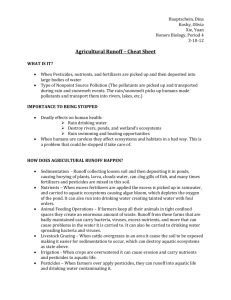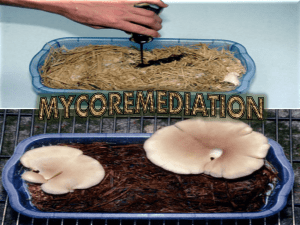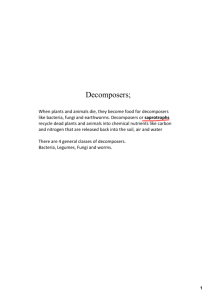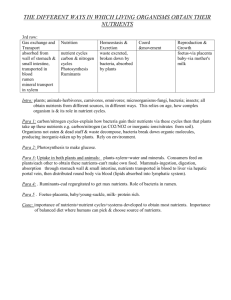Ocean “dead zones” from nitrogen runoff point to
advertisement
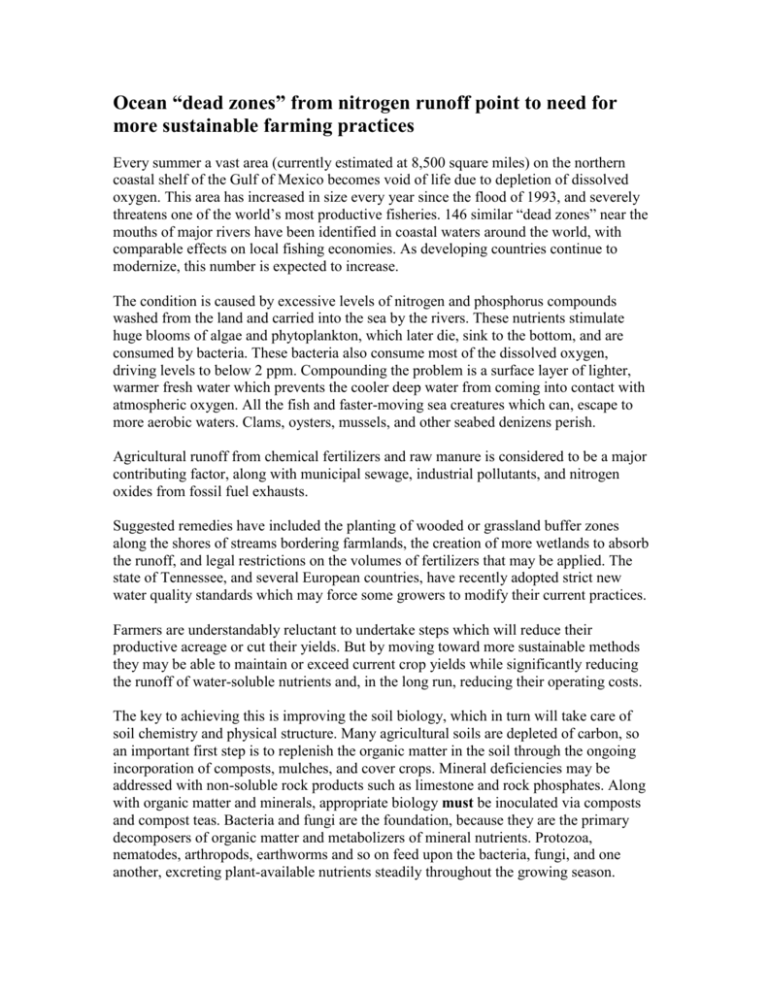
Ocean “dead zones” from nitrogen runoff point to need for more sustainable farming practices Every summer a vast area (currently estimated at 8,500 square miles) on the northern coastal shelf of the Gulf of Mexico becomes void of life due to depletion of dissolved oxygen. This area has increased in size every year since the flood of 1993, and severely threatens one of the world’s most productive fisheries. 146 similar “dead zones” near the mouths of major rivers have been identified in coastal waters around the world, with comparable effects on local fishing economies. As developing countries continue to modernize, this number is expected to increase. The condition is caused by excessive levels of nitrogen and phosphorus compounds washed from the land and carried into the sea by the rivers. These nutrients stimulate huge blooms of algae and phytoplankton, which later die, sink to the bottom, and are consumed by bacteria. These bacteria also consume most of the dissolved oxygen, driving levels to below 2 ppm. Compounding the problem is a surface layer of lighter, warmer fresh water which prevents the cooler deep water from coming into contact with atmospheric oxygen. All the fish and faster-moving sea creatures which can, escape to more aerobic waters. Clams, oysters, mussels, and other seabed denizens perish. Agricultural runoff from chemical fertilizers and raw manure is considered to be a major contributing factor, along with municipal sewage, industrial pollutants, and nitrogen oxides from fossil fuel exhausts. Suggested remedies have included the planting of wooded or grassland buffer zones along the shores of streams bordering farmlands, the creation of more wetlands to absorb the runoff, and legal restrictions on the volumes of fertilizers that may be applied. The state of Tennessee, and several European countries, have recently adopted strict new water quality standards which may force some growers to modify their current practices. Farmers are understandably reluctant to undertake steps which will reduce their productive acreage or cut their yields. But by moving toward more sustainable methods they may be able to maintain or exceed current crop yields while significantly reducing the runoff of water-soluble nutrients and, in the long run, reducing their operating costs. The key to achieving this is improving the soil biology, which in turn will take care of soil chemistry and physical structure. Many agricultural soils are depleted of carbon, so an important first step is to replenish the organic matter in the soil through the ongoing incorporation of composts, mulches, and cover crops. Mineral deficiencies may be addressed with non-soluble rock products such as limestone and rock phosphates. Along with organic matter and minerals, appropriate biology must be inoculated via composts and compost teas. Bacteria and fungi are the foundation, because they are the primary decomposers of organic matter and metabolizers of mineral nutrients. Protozoa, nematodes, arthropods, earthworms and so on feed upon the bacteria, fungi, and one another, excreting plant-available nutrients steadily throughout the growing season. N, P, K and other nutrients which are tied up in the biomass of soil microbes do not leach into groundwater and streams: they feed the crops, not the algae and plankton offshore. Because many species of bacteria and fungi are known to break down or sequester toxins, soils with good biological activity can mitigate ground water pollution. Another feature of biologically healthy soil, which may directly reduce runoff, is its improved water retention due to its greater porosity. Hopefully, as more and more pioneering growers demonstrate success with biological farming methods, more and more conventional growers will recognize the benefits and begin to change over. This can only lead to positive outcomes for farmers and fishermen alike.


